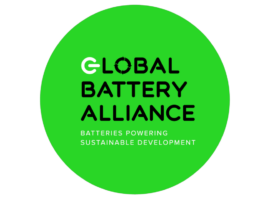HyperStrong’s 2-in-1 EV charger, battery storage system

Chinese energy storage heavyweight Hyperstrong has moved into the EV charging space, leveraging its core specialty. Its HyperCube Pro series is an all-in-one charging and storage system for commericial and industrial (C&I) users, which offers an expanded range of revenue streams due to its dual nature.
According to Zhao Qingbin, senior product manager at HyperStrong, the product was developed to address the increasing demand for fast-charging EV infrastructure. “With the rise in EV penetration, particularly the need for DC fast-charging stations, existing grid capacities are becoming increasingly strained. Many of the older, smaller power stations in urban areas, which function like capillary-level infrastructure, lack the capacity to support the high power requirements of these stations without significant investment in grid upgrades,” Zhao tells ESS News.
The HyperCube Pro was designed as a solution to overcome these limitations by integrating both charging and storage capabilities. It allows for charging stations to be over-equipped by 1-2 times, under the same transformer capacity. By utilizing energy storage to provide power support, the charging capacity of the station increases by 40%-80%, while postponing the need for transformer upgrades, according to HyperStrong.
Meanwhile, the energy storage component of the system allows for peak shaving and valley filling to achieve access to related government subsidy benefits.
“By providing a versatile system that combines energy storage with charging, HyperCube Pro not only stabilizes the grid but also diversifies the operational model of charging stations, offering multiple revenue opportunities through dynamic energy management and peak-shaving capabilities. This innovation enables more efficient use of resources, ensuring reliable power delivery and maximizing economic returns for charging station operators,” Zhao says.
As a result, in addition to peak-valley arbitrage, the set of potential revenue streams that can be tapped with HyperCube Pro includes: demand control, station capacity expansion, virtual power plants, reactive power regulations, and backup power supply.
The all-in-one product is based on solid-state LFP cells, which come with additional benefits.
“HyperStrong sources its solid-state LFP cells from its own in-house R&D efforts. Our team has successfully commercialized semi-solid-state batteries in energy storage projects already. These batteries offer several key advantages over conventional LFP, including higher safety, higher energy density and longer lifecycle, giving us a competitive edge in the market,” Zhao says.
HyperCube Pro has a rated energy of 64 kWh and rated AC power of 100 kW (maximum 120 kW). It’s rated voltage stands at 380 V plus-minus 15% and the operating voltage ranges from 200 V to 1,000 V. Maximum charge and discharge efficiency stands at more than 90%.
The product weighs less than 1,600 kilograms and measures 1,171.5 x 800 x 1,998.5 mm. The operating temperature range is from -20 to around 50 degrees Celsius.
“HyperCube Pro is currently available only in mainland China. The plan is to bring the product to Europe and North America in 2025,” Zhao says.
The second version of the product, the charging and storage all-in-one machine HyperCube Pro Ⅱ, was launched at the EESA Energy Storage Exhibition held in Shanghai last month. The product allows charging piles to be over-equipped by two to five times with the same transformer capacity and has two charging guns.
It features 100 kWh battery modules, based on LFP cells, and offers a total charging power of 320 kW. The maximum power of a single power gun can be 120 kW /180 kW /240 kW while charging efficiency reaches 96%.
Founded in 2011, Beijing-based HyperStrong is one of the leading battery energy storage system integrators in China. It has delivered more than 300 energy storage projects to date, with more than 20 GWh of operational capacity. The company is now looking to expand its business overseas, such as through the partnership announced this week in Australia.













